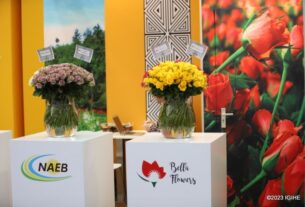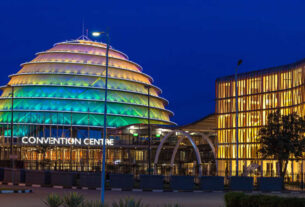The Rwanda Mines, Petroleum, and Gas Board( RMB) has blazoned an instigative discovery in Lake Kivu 13 oil painting wells showing signs of petroleum deposits. This advance marks a significant corner in Rwanda’s trip toward employing its natural coffers. still, farther studies are necessary to assess the volume of oil painting, its quality, and the costs involved in rooting it.
“ The good news is that we’ve oil painting. primary exploration in Lake Kivu revealed 13 wells with signs of oil painting, ” RMB’s CEO, Francis Kamanzi, blazoned to members of congress on Wednesday, January 15, 2025.
Kamanzi explained that this discovery aligns with findings in neighboring countries. “ Considering discoveries in neighboring regions like Uganda, oil painting was discovered in Lake Albert, which is believed to be part of the same rift vale stretching through Lake Kivu to Lake Tanganyika. There’s confidence that oil painting exists, ” he added.
This development was participated during a discussion involving the Parliamentary Committee on Governance, Gender Equality, and the Ministry of Environment. The discussion concentrated on Rwanda’s ongoing sweats to explore and develop its natural coffers while balancing environmental and profitable precedences.
sweats to explore oil painting in Rwanda date back several times but have faced interruptions. original disquisition began in the early 2000s but was halted in 2014 due to colorful specialized and fiscal challenges. still, disquisition proceeded after Canada- grounded company Black Swan Energy discovered that certain areas in Eastern Kivu had significant eventuality for oil painting and gas birth.
One of the crucial pointers of implicit oil painting reserves in Lake Kivu was the presence of methane gas. Methane, frequently set up alongside petroleum deposits, has been uprooted from the lake for energy generation for times. This discovery of methane handed early substantiation that oil painting could also be present.
Kamanzi expressed sanguinity about Lake Kivu’s eventuality, suggesting that the oil painting reserves might surpass those of bordering countries. “ Our Lake Kivu is deeper than other lakes in the region, so we might have further oil painting than our neighbors, ” he noted.
Despite the promising findings, the road ahead requires expansive exploration and substantial investment. While the original studies verified the presence of oil painting, deeper disquisition is essential to determine its volume, type, and marketable viability. This involves drilling into the lakebed to collect samples for laboratory analysis, a complex and precious process.

Drilling costs are particularly high, with the expenditure of creating a single well exceeding$ 15 million( roughly Frw 20 billion). The coming phases of disquisition end to collude the lakebed in lesser detail, using advanced technologies to pinpoint the exact locales of oil painting and gas reserves.
former disquisition sweats have formerly incurred significant costs. original exploration, which included drilling up to depths of 480 measures, involved planting machines to collect samples from the lakebed. These samples verified the presence of methane gas as well as implicit oil painting reserves. To date, these sweats have cost roughly Frw 1.7 billion. unborn phases of disquisition are anticipated to bear an fresh Frw 8 billion to Frw 10 billion.
Once the detailed mapping is complete, and the exact locales of oil painting reserves are linked, farther tests will determine the type of oil painting present in Lake Kivu. oil painting deposits can vary significantly in form, ranging from solid asphalt to liquid energies like diesel or gasoline, or indeed gas. These variations affect both the birth styles and the implicit profitable benefits of the resource.
still, the birth process would follow a system analogous to that used for methane gas birth, If commercially feasible amounts of oil painting are verified. It begins with drilling deep holes in the lakebed using technical outfit able of piercing jewels and other accoutrements . Once the drilling is complete, the base of each well is corroborated with beach or clay to stabilize the structure. Pipes are also fitted into the holes to pump oil painting from beneath the lakebed to storehouse tanks on the face.
This process is technologically complex and requires significant moxie, but it has the implicit to transfigure Rwanda’s energy sector. rooting oil painting from Lake Kivu would not only reduce Rwanda’s dependence on imported energies but could also produce new profit aqueducts and drive profitable growth.
still, the trip toward oil painting product comes with challenges. The high costs of disquisition and birth, coupled with the need to cover Lake Kivu’s unique ecosystem, bear careful planning and collaboration. The lake, participated by Rwanda and the Democratic Republic of Congo, is a vital natural resource for both countries. icing that oil painting disquisition and birth are conducted in an environmentally sustainable manner will be critical to conserving the lake’s biodiversity and its part in supporting original communities.
Beyond environmental considerations, the discovery also raises questions about structure and capacity. Rwanda will need to invest in structure similar as channels, storehouse installations, and transportation networks to support oil painting product. also, developing original moxie in petroleum engineering and related fields will be essential to insure that the benefits of oil painting birth are maximized for the country.
The implicit benefits of oil painting birth are immense.However, they could significantly boost Rwanda’s frugality, If Lake Kivu’s oil painting reserves are as substantial as original findings suggest. oil painting earnings could be used to fund structure systems, ameliorate healthcare and education, and reduce the country’s reliance on foreign aid. likewise, developing the oil painting sector could produce jobs, both directly in birth and laterally in supporting diligence.
RMB’s CEO, Francis Kamanzi, remains auspicious about the future. “ This discovery represents a significant occasion for Rwanda. still, we must approach it with caution and responsibility. Our precedence is to insure that the disquisition and birth processes are conducted efficiently and sustainably, with benefits for all Rwandans, ” he said.
Looking ahead, the coming way will involve continued collaboration with transnational experts, investment in advanced disquisition technologies, and a focus on environmental conservation. Rwanda’s government has formerly demonstrated its commitment to balancing development with sustainability, and this approach will be pivotal as the country moves near to unleashing the eventuality of Lake Kivu’s oil painting reserves.
The discovery of oil painting in Lake Kivu is n’t just a corner for Rwanda; it also highlights the broader eventuality of the East African region. With discoveries in bordering countries like Uganda and Kenya, East Africa is arising as a significant player in the global energy request. Rwanda’s disquisition sweats contribute to this narrative, situating the country as a forward- allowing and resourceful nation ready to harness its natural wealth for the benefit of its people.
While important work remains to be done, the discovery of oil painting in Lake Kivu is a promising development that could shape Rwanda’s future. With careful planning, investment, and a commitment to sustainability, the country has the occasion to turn this natural resource into a motorist of progress and substance for generations to come.



